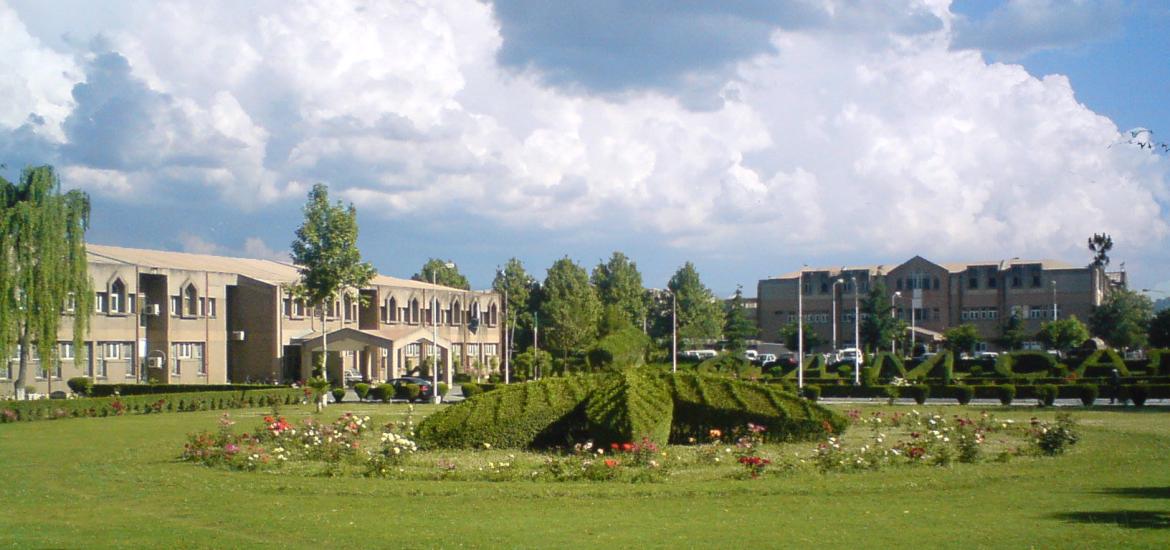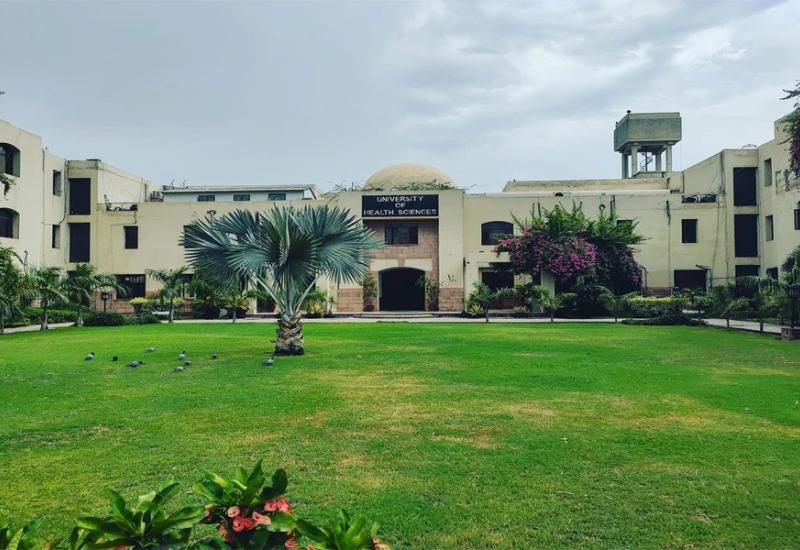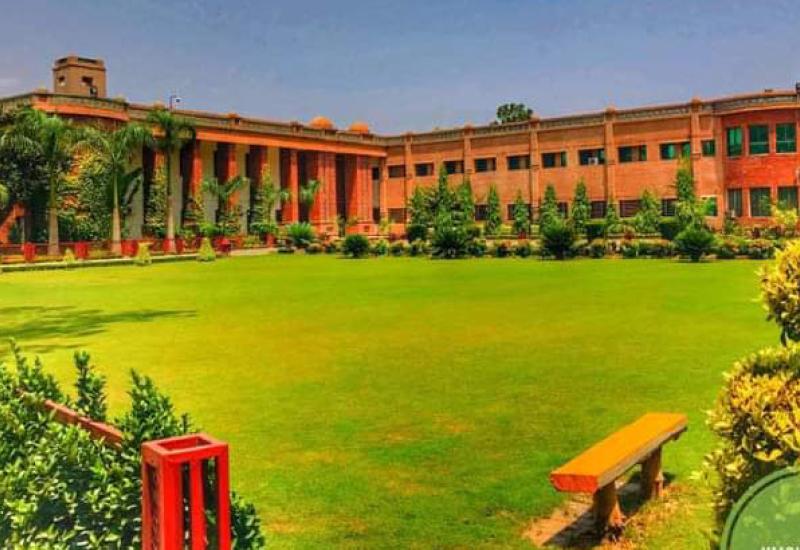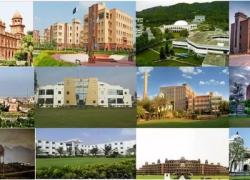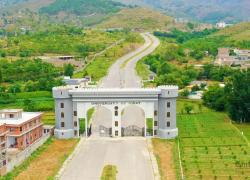Navigating the Transition: Challenges and Opportunities in Upgrading Medical Colleges to Universities in KPK
The caretaker Chief Minister, Khyber Pakhtunkhwa, Justice (retired) Syed Arshad Hussain Shah recently announced the upgradation of Khyber Medical College (KMC) Peshawar and Ayub Medical College (AMC) Abbottabad to the status of medical universities. He emphasized that spade work on this account has been started and a meeting of the provincial cabinet shall be convened soon to grant necessary approval.
Similar news is making rounds on various social media platforms that the caretaker Prime Minister, Anwaar-ul-Haq Kakar on Wednesday announced upgradation of KMC and AMC as public sector medical universities. The Prime Minister made this important announcement while addressing the 46th annual meeting of the Association of Physicians of Pakistan Descent of North America organized by the alumni of Khyber Medical College Peshawar at Governor House, Peshawar. The Prime Minister urged that practical work on upgradation of KMC and AMC as public sector medical universities should be initiated within 35 hours by the respective authorities. The Prime Minister further directed the Governor and Chief Minister, Khyber Pakhtunkhwa to give practical shape to the scheme of upgradation of KMC and AMC to full-fledged medical universities.
This announcement has left graduates and alumni of KMC exuberating as their long-standing demand for upgradation of their alma mater to the university level has finally been actualized. However, the announcement has raised alarm bells in a section of society especially the academic community and scholastic fraternity and even the graduates of KMC about the fate and future of medical education in the province for which sincere efforts were already spearheaded by the government under the umbrella of Khyber Medical University (KMU)- the cause, this university was essentially founded and mandated.
Disagreement to the proposed upgradation came even from old graduates of KMC. Their argument was plain, simple and convincing- since Khyber Pakhtunkhwa already had a medical university, there was no need for another medical university.
Though this announcement, has a long way to go before its enactment and execution as proper legislation shall be required by the elected bodies with some decent amount of deliberations and consultations with all key stakeholders, it harbingers numerous potential benefits with several drawbacks and challenges when analyzed from different perspectives:
Potential benefits:
The upgradation of these medical colleges to a university level can bring about several benefits, contributing to the overall improvement of medical education and healthcare delivery. Some of the key advantages include:
- Increased capacity and autonomy: University status often comes with increased autonomy in decision-making and governance. This allows the institution to adapt more quickly to changing educational and healthcare landscapes, fostering innovation and responsiveness. Upgradation of KMC and AMC to universities could expand enrollment capacity, allowing more students to pursue medical careers and addressing the shortage of medical and allied health professionals in Pakistan. Additionally, the new university status grants these colleges greater autonomy in curriculum development, research initiatives, expansion and collaborations. As a result, the vast academic and research potential of KMC and AMC will optimally be utilized with the grant of required academic and administrative independence that is essential for an academic institution to flourish.
- Improved quality and specialization: These new universities can attract and retain experienced faculty, invest in advanced research facilities, and offer specialized postgraduate programs. This could elevate the quality of medical education and training, leading to better healthcare outcomes in the country in the long term. Upgrading to a university status will allow for expansion and diversification of several academic programs. This may include introduction of new undergraduate and postgraduate programs, fostering a more comprehensive and specialized curriculum.
- Economic and social benefits: These medical universities can attract more research grants and investments, create new jobs in healthcare and related fields, and contribute to the overall economic development of the area. University status often enhances the appeal of an institution, making it more attractive for experienced and qualified faculty. The ability to offer a broader range of academic and research opportunities can aid in recruiting and retaining skilled medical educators. Furthermore, improved healthcare could benefit the local population and attract skilled professionals to the area.
- Immediate benefits to the teaching faculty and staff: With upgradation to the university’s stature, the teaching faculty of these colleges will be upgraded (one step) in line with the requirements of HEC and at par with the teaching faculty of other public sector universities in the country. Moreover, the administrative staff shall have more opportunities for accelerated promotion with a well-defined career path in the due course of time. This transition to university status may enable it to pull additional resources for continuing medical education and professional development programs for the staff. This benefits both faculty and healthcare professionals, ensuring that they stay abreast of the latest advancements in medical science and technology.
- Triggering healthy competition: The upgradation of these institutions to the university level shall foster an environment of healthy competition among these universities and at the end of the day the quality of medical education shall improve.This can lead to advancements in medical knowledge, innovations in healthcare practices, and potentially contribute to the global scientific community.
- Creating new opportunities for student : Students at these upgraded medical universities may have access to a more diverse range of extracurricular activities, research opportunities, and collaborative projects. This will further enrich their overall educational experience and better prepares them for a career in medicine in a global competitive market place.
However, it is critically important to consider potential risks associated with upgrading these medical colleges to the level of a university. With the potential benefits mentioned above, these new universities will also face numerous challenges, the government needs to seriously consider. Some of the potential drawbacks of such a decision are briefly discussed here:
Potential drawbacks:
- Financial constraints: Upgrading these prestigious colleges to universities requires significant financial investments for infrastructure development, faculty recruitment as well as upgradation (with pension liabilities), and research facilities. Ensuring adequate funding for sustained growth and quality education could be challenging as in the case of other upgraded colleges such as Islamia College Peshawar and King Edwards Medical College, Lahore which will require potentially increasing tuition fees or compromising standards as these colleges are considered to be the worst examples of losing its identity as a seat of quality education to the substandard degree awarding status having poor financial health.
- Faculty recruitment and development: Attracting and retaining qualified faculty members shall be a crucial part for the success of these medical institutions as it took 15 years for the KMU to hire, develop and retain qualified faculty. Ensuring an adequate number of skilled educators, fostering professional development opportunities, and aligning faculty recruitment with the expanded scope of programs are challenges to be addressed.
- Organizational challenges: The transition from colleges to universities might involve administrative restructuring, curriculum adjustments, and changes in faculty positions (upgradation). Managing a larger and more complex institution may pose governance challenges, and effective leadership and management strategies are crucial. Implementing these changes smoothly and effectively requires careful planning and execution.
- Duplication of resources: As there is another public sector medical university (i.e. KMU) already exists in the provinces, concerns about duplication of resources and competition for limited funding or student enrollment might arise. Even the territorial jurisdiction of KMU shall be split among all the three putting in danger the very existence of this fastly-growing Khyber Medical University.
- Quality concerns such as accreditation and quality assurance: Achieving and maintaining accreditation standards for a medical university is essential for ensuring the quality of education and research. Navigating the accreditation process and implementing quality assurance measures can be complex. Such a hasty upgradation and rapid expansion without proper planning and quality control mechanism could compromise the quality of medical education and graduate outcomes in the province. The transition from a medical college to a medical university is a complex process and may require careful planning to ensure a smooth transition without disruption to ongoing educational activities. Mere changing the signboard of a “college” to a “university” shall be detrimental as has been counterproductive in the case of historical Islamia College Peshawar and the prestigious King Edwards Medical College, Lahore.
- Students transition: Managing transition for existing students during the up-gradation process is a critical consideration as it is the students that are effected adversely all the time as such up-gradations have never been plain sailing in the past. Ensuring that ongoing academic commitments are met and that students receive adequate support during any changes is important for student success.
- Creating a spiral effect: More medical and dental colleges, both in the public and private sector in the province will enter the race, asking for autonomy to get degree-awarding status will be a matter of serious disadvantage for the rapidly developing Khyber Medical University which will culminate in each medical college becoming a university.
- Stakeholders engagement: Building and maintaining positive relationships with various stakeholders, including the existing medical university, healthcare institutions, and the community, being crucial is virtually overlooked. Building trust through effective communication and collaboration is of utmost important to navigate challenges and foster support among key stakeholders.
Addressing these challenges requires proactive planning, effective communication, collaboration among stakeholders, and a commitment to maintaining high standards of education and research. Additionally, institutions may benefit from seeking guidance from HEC, experienced medical professionals, experts in educational administration and healthcare management during the up-gradation process.
Overall, the decision may be considered judicious if it is done with careful planning, adequate funding, and a clear vision for the future development of these institutions without harming the interest of already well-functioning medical university in the province. Assessing the long-term impact requires considering factors like:
- Performance of the existing medical university: Since the already existing medical university (i.e. KMU) is performing up to its best and delivering on every front then what is the rationale for establishing new medical universities in the province?
- Demand for medical graduates in the region: Is there a genuine need for increased medical education capacity that is not catered by the existing medical university?
- Financial sustainability: Can the universities secure enough funding to maintain quality education and research?. In fact, the higher education institutions in the province is under enormous pecuniary strain, these days. The universities, in general, are chronically underfunded. Financial dependence on the government means that funding levels fluctuate with the ups and downs of government resources. And this is happening every now and then. The academics, across the board, are profoundly concerned about their ever-increasing financial constraints which hindered their ability to optimally perform and deliver. This bitter reality must be kept in mind while moving with these mega schemes.
- Management and governance: Will the transition to university structure be effectively managed, ensuring smooth operations and academic excellence?
Analyzing these factors and conducting feasibility studies can help ensure that the proposed upgradation is beneficial to the medical education sector, healthcare system, and overall development of the region without adversely impacting the existing medical university. Ultimately, the decision’s success will depend on taking all key stakeholders into confidence before its implementation and the efforts of all stakeholders are valued in making these new medical universities thrive.
It is important to note that the decision to upgrade KMC and AMC to the status of medical universities would require a thorough evaluation of the institutions’ infrastructure, faculty, research facilities, and other factors such as genuine need and financial health. The decision should be based on the merit of the institutions and their ability to meet the criteria set by the Higher Education Commission (HEC) of Pakistan without compromising the interest of KMU. The HEC is responsible for regulating higher education institutions in Pakistan and ensuring that they meet the required standards.
In due course, the decision to execute the upgradation of KMC and AMC to the status of medical universities would depend on a comprehensive assessment of these factors and the specific needs and goals of the institutions and the dynamics of the healthcare system in the region. It’s important for such decisions to be made with the input of all key stakeholders, including faculty, students, healthcare professionals, policymakers and authorities of Khyber Medical University as it would be unwise to upgrade medical colleges to the university level at the cost of already exiting and well-functioning medical university.

